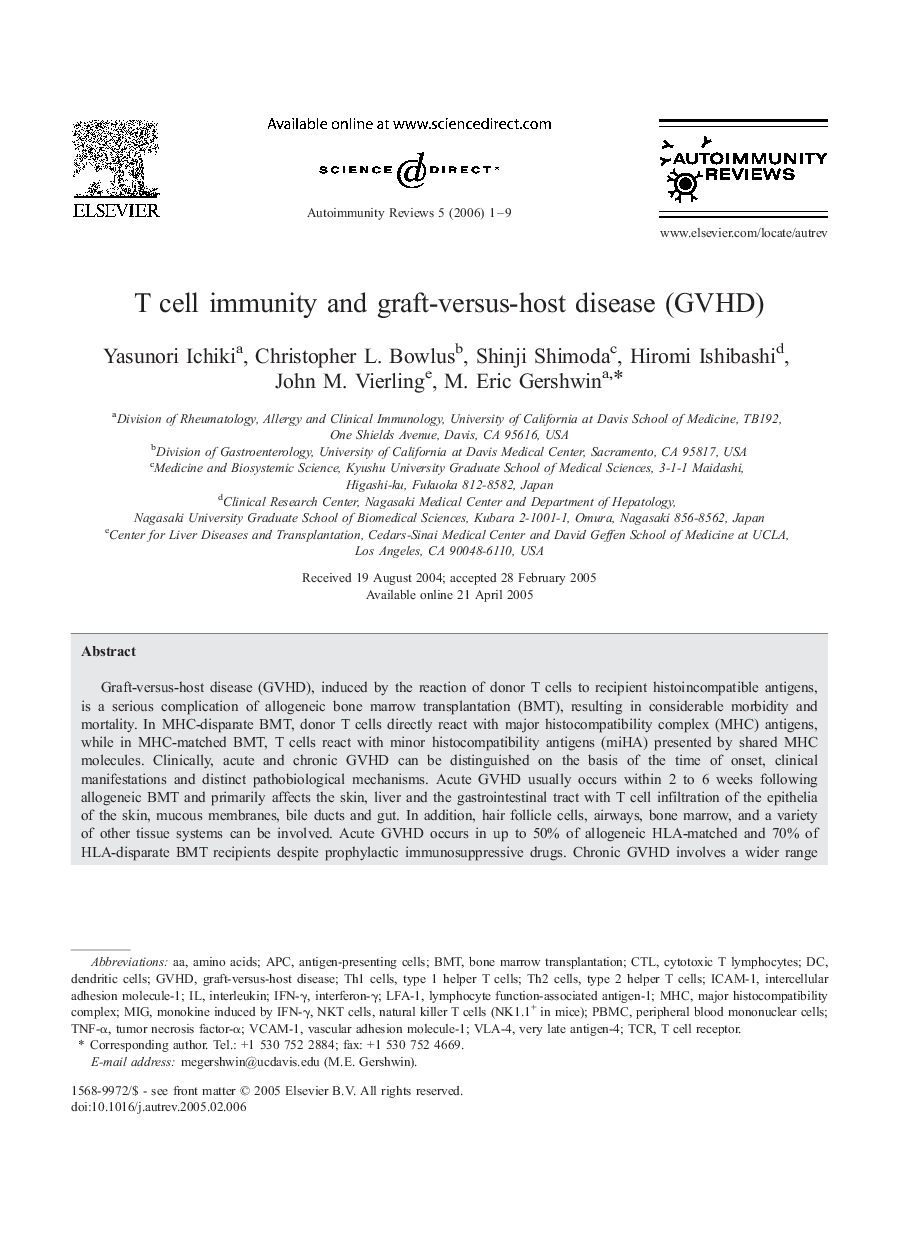| Article ID | Journal | Published Year | Pages | File Type |
|---|---|---|---|---|
| 3342762 | Autoimmunity Reviews | 2006 | 9 Pages |
Graft-versus-host disease (GVHD), induced by the reaction of donor T cells to recipient histoincompatible antigens, is a serious complication of allogeneic bone marrow transplantation (BMT), resulting in considerable morbidity and mortality. In MHC-disparate BMT, donor T cells directly react with major histocompatibility complex (MHC) antigens, while in MHC-matched BMT, T cells react with minor histocompatibility antigens (miHA) presented by shared MHC molecules. Clinically, acute and chronic GVHD can be distinguished on the basis of the time of onset, clinical manifestations and distinct pathobiological mechanisms. Acute GVHD usually occurs within 2 to 6 weeks following allogeneic BMT and primarily affects the skin, liver and the gastrointestinal tract with T cell infiltration of the epithelia of the skin, mucous membranes, bile ducts and gut. In addition, hair follicle cells, airways, bone marrow, and a variety of other tissue systems can be involved. Acute GVHD occurs in up to 50% of allogeneic HLA-matched and 70% of HLA-disparate BMT recipients despite prophylactic immunosuppressive drugs. Chronic GVHD involves a wider range of organs and clinical manifestations include scleroderma, liver failure, immune complex disease, glomerulonephritis, and autoantibody formation.
